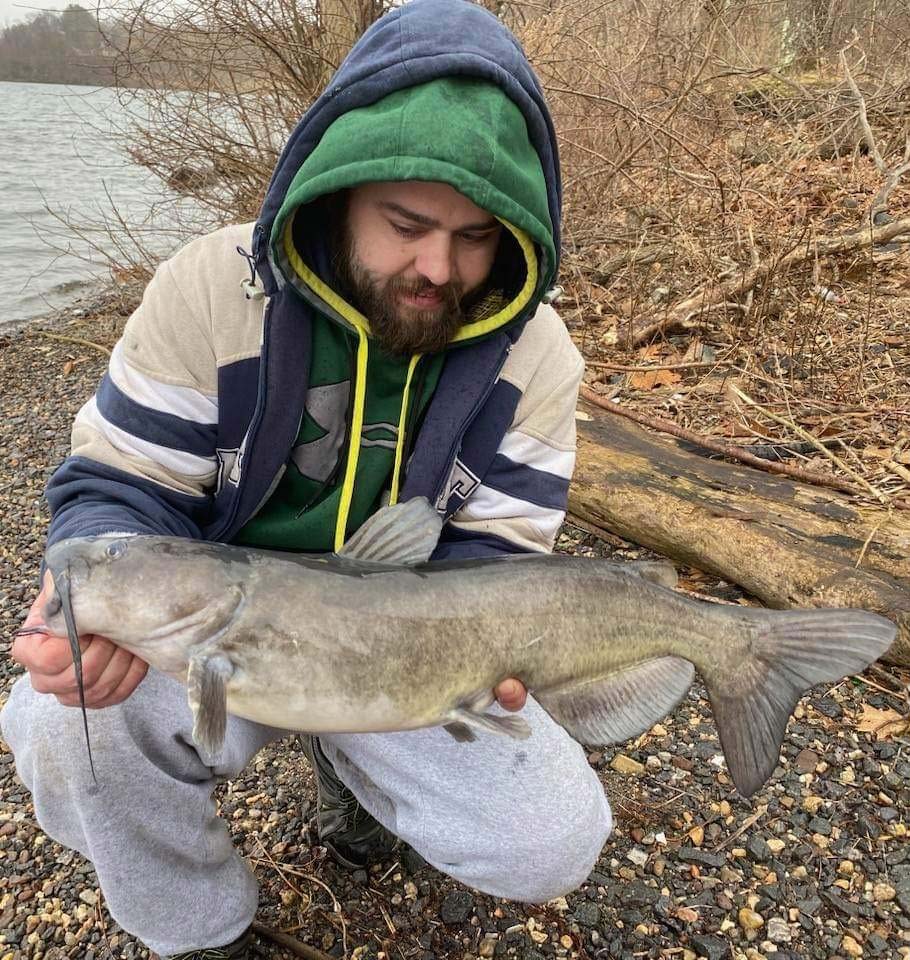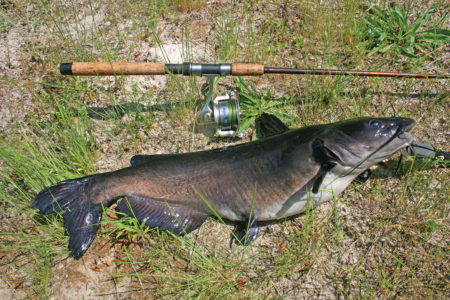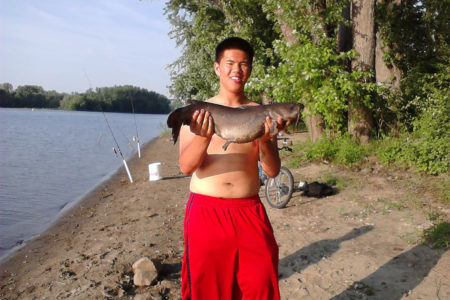
Find those jumbo cats just below the dams.
Catfish are known to prowl the bottom of lakes and rivers. They are excellent at squeezing into just about every nook and cranny down there. These whiskered fiends tuck themselves away under trees and in rock piles as well as eroded muddy banks. Big rivers come to mind when I think about catfishing. Although you can find cats throughout a river system, there are key points that you should focus on. The most important one in my mind being dams!
In my opinion the most productive area to fish on river systems are dams. It’s usually a mixed bag of fish as it can be favorable for most species. Deep holes and well oxygenated water combined with a dead end to corral forage makes it a happy place for a cat to live. While these locations can be good on a somewhat regular basis, there are key times when it can be lights out fishing and like most things, timing is everything.
To catch your target species first you must understand their behaviors; how they feed, when they feed and where they’ll be are all important factors in the equation. Catfish have barbels or “whiskers” on the sides and underside of their mouths. The purpose of these appendages is to detect food. Cats tend to scavenge the bottom looking for meals that consist of crayfish, eels, freshwater snails and any dead fish otherwise.
Visibility in rivers is not always the best to muddy waters caused by heavy flows; this would shut things down and make it difficult to catch other species. However, poor visibility does not really hinder a hungry cat’s ability to forage. In fact, they seem to thrive in these conditions when the bottom gets stirred up. Then when dams are let loose, the noise and moving water can disorient baitfish making them susceptible to easy predation.
I grew up fishing the Mighty Housatonic and its impoundments in Connecticut, and know of several dams along the river from Massachusetts down almost to Long Island Sound. One thing I have found is that the biggest catfish love dams. I’ve caught some great quality fish while looking for pike and even striped bass in the tidal section of the river. With that being noted, pretty much no bait is too big for a hungry catfish.
I’ve found good bait for catfish to be chicken liver, whole or chunked bluegill, crayfish and even larger bait fish like bunker. When it comes to these fish sometimes when the bait is stinky and oily it is even better. Some people even make “stink bait” where they leave their cut bait in a sealed bucket to bake in the sun a bit. In murky water things like scent and taste can increase your odds of finding fish. Bigger bait can help to weed out any smaller fish as well; not always, but it certainly can help.
Making sure you have the right tackle is important. There are three main things when I’m rigging up for catfish, those being your choice of rod, line and of course, your hook selection. Having a rod with some serious backbone is a good idea. Not only to pull fish out of structure but also to properly fight big fish in strong currents. I prefer braid for longer casts, durability and the fact that there’s no stretch which provides a more solid hookset.
Cats have very hard heads and being able to drive your hook in deep enough to their boney mouths is imperative for success. Their mouths are like a vice lined with coarse sandpaper, which is why I never cheap out on hooks. I prefer to use Gamakatsu hooks. Everything they make is ridiculously sharp and strong. I tie on their octopus circle or big river bait hooks normally. I tend to lean towards the octopus circle though. The bait stays on well and more importantly, the circle hooks do their job in finding the corner of the fish’s mouth. Of course, circle and octopus circle hooks reduce the risk of gut hooking.
Night time can be the right time when looking for catfish in general. They tend to be more active once the sun goes down, especially during the warmer months when they will be more willing to leave deeper holes and venture into shallower areas seeking out your offering. Schools of baitfish also tend to push more shallow at night as well which will in turn draw in predatory fish of all kinds.



